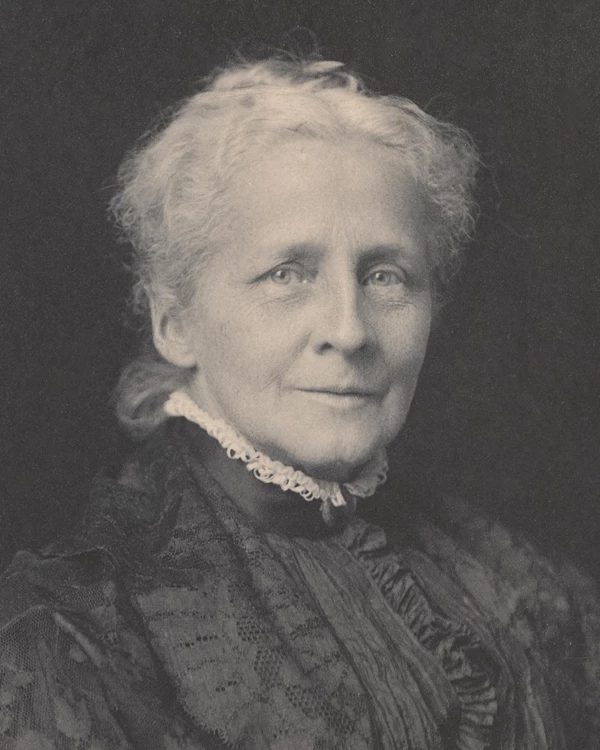Last updated: April 21, 2025
Person
Julia Parmly Billings

Billings Family Archives, The Woodstock Foundation, Inc.
Julia Parmly Billings was born in 1835 in New York City to Dr. Eleazar Parmly (dentist) and Anna Maria Valk Smith Parmly. Her father's successful practice, along with New York City real estate investments, ensured a sophisticated life of wealth and privilage for his family.
Although Julia Parmly apparently had had several suitors before she met Frederick Billings, at twenty-seven she was older than the usual age of marriage for mid-nineteenth-century women. After meeting in early March 1862, the couple quickly fell in love, Juila rejecting an “old suitor” for the “new acquaintance to whom I gave my heart a fortnight later.” The couple was engaged in two weeks. Frederick and Julia married at the Parmly home on March 31, 1862, their engagement undoubtedly truncated by Frederick’s commitment to return to the west coast quickly for business.
The couple moved back to the west coast less than a year later, along with their first son, Parmly. Julia employeed a childhood servant, Maria Barnes, known as Ridey, to provide care to her and the baby.
Upon the family’s return to the Northeast, Frederick purchased George Perkins Marsh’s childhood home and farm in 1869. He had intentions to turn the Marsh residence from a federalist style home into a Victorian mansion. Julia was originally overwhelmed at the prospect of managing a large estate, but eventually took an active role in the care of the property. Both Frederick and Julia felt a deep emotional connection to their property in Woodstock; their diary entries highlight their enthusiasm and delight at returning to their summer residence each year. A brief entry from Julia in 1898 captured these feelings: “the eve’g charming and our lovely place with all its memories fills us with grateful joy”.
A devout evangelical, Julia devoted her time to daily prayer and Bible studies. Together, the Billings made frequent contributions to nineteenth-century evangelist Dwight L Moody’s Northfield Seminary School for Girls and Mt. Hermon School for Boys. Julia believed strongly in Moody’s strict interpretation of the Bible and followed his career with interest. Moody stayed with the Billings on handful of occasions when he visited Woodstock to preach. After his passing in 1899, Julia attended his memorial service in Carnegie Hall, wrote passionately about her grief in her diaries, and continued charitable donations to Moody’s schools and institutions.
After birthing seven children and supporting her husband's long career in real estate and railroads, Julia suffered a number of losses in the 1880s. Her eldest son, Parmly, died suddenly in Chicago, on his way east from jobs as a rancher and businessman in Montana. A year and a half later her son Ehrick, who had suffered from a heart condition for much of his life, died in Woodstock, and Frederick Billings suffered a stroke barely three months later. Julia, who had always been concerned and solicitous about her husband’s health, shared his care with a hired nurse until his death in September of 1890.
Frederick Billings’ will put his estate into a trust that allowed Julia to remain in both their New York and Woodstock homes and kept the Woodstock holdings together until her death. Julia and her surviving children, especially her three daughters Laura, Mary, and Elizabeth, continued to care for the property after Frederick's death.
Julia died on Februrary 17, 1914. The family had a service at their Madison Avenue home, and then another service at the Congregational Church in Woodstock, Vermont. She was buried in River Street Cemetary next to Frederick "under the shadow of the mountain she loved so well", wrote Elizabeth Billings, referring to Mount Tom.
